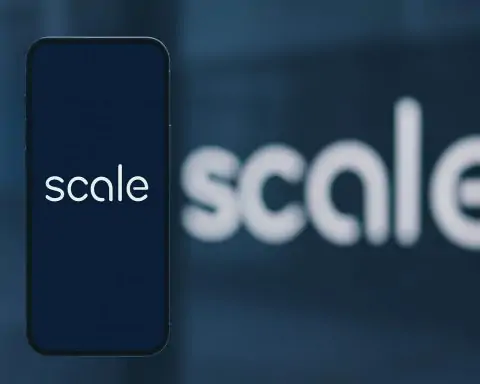- Blowout Q3 Results: United Parcel Service (UPS) crushed Wall Street forecasts for the third quarter of 2025, posting adjusted earnings of $1.74 per share (vs. $1.31 expected) on revenue of $21.42 billion (vs. $20.84 billion expected) [1] [2]. The strong beat reverses a recent trend of declining earnings and sales.
- Stock Skyrockets: UPS shares, which closed at $89.12 on Monday, surged nearly 18% in pre-market trading after the earnings release [3]. Investors cheered the surprise profit jump following a year in which the stock had fallen over 30% amid weak demand and rising costs [4].
- Down Year for UPS: Before this rally, UPS stock was down ~30% year-to-date in 2025, as the global shipper grappled with lower package volumes and higher labor expenses [5]. Domestic delivery demand slowed post-pandemic, and a pricey new Teamsters union contract drove up wages, squeezing margins [6].
- Dividend Under Scrutiny: UPS’s share price slump had pushed its dividend yield to about 7.5%, among the highest in the S&P 500. The company has raised its dividend for years, but some analysts warn that such a high yield may not be sustainable. “UPS is resetting its business, but there’s a risk that it could also reset its dividend,” one Motley Fool analyst cautioned [7]. Even Jim Cramer has mused that UPS “could use some money” – hinting that the rich payout might be reevaluated if challenges persist [8].
- Cautious Outlook Ahead: UPS itself struck a measured tone despite the Q3 beat. The company guided Q4 revenue to ~$24.0 billion, only modestly above consensus [9], reflecting sluggish volume trends. Investors are watching whether CEO Carol Tomé’s “Better, Not Bigger” strategy – focusing on profitable shipments and cost cuts – can reignite growth without sacrificing the dividend. “We are making meaningful progress on our strategic initiatives… positioning the company for stronger long-term performance,” Tomé has said [10].
Earnings Beat Sparks Relief Rally
UPS delivered a much-needed positive surprise in its third-quarter earnings, giving weary investors a jolt of optimism. The Atlanta-based logistics giant reported $1.31 billion in net income for Q3, or $1.55 per share (GAAP), and $1.74 per share after one-time costs [11]. Both earnings and revenue comfortably beat analyst estimates [12] [13], which had predicted a steep year-over-year profit drop amid soft package volumes. In fact, EPS had been expected to plunge ~25% versus last year [14], so UPS’s performance suggests it managed costs and pricing far better than anticipated.
Wall Street reacted swiftly. In pre-market trading on Oct. 28, UPS stock exploded nearly 18% higher [15]. By the opening bell, shares were trading around $105 – a dramatic rebound from the prior day’s $89 close. This one-day pop recoups a chunk of UPS’s 2025 losses and reflects a sigh of relief from investors. After months of pricing in worst-case scenarios, a solid earnings beat (and a hint of improving trends) sent short-sellers scrambling and bargain-hunters rushing in.
Management also offered slightly upbeat guidance for the holiday quarter, further fueling the rally. UPS said it expects about $24.0 billion in revenue for Q4 2025, a touch above the ~$23.8 billion analysts forecast [16]. This implies roughly flat year-over-year sales in Q4 – not exactly stellar, but better than a decline. It suggests that UPS sees peak-season e-commerce demand holding up and perhaps the worst of volume declines in the rearview. Any optimism is welcome after the difficult year UPS has had.
A Year of Headwinds: Falling Volumes, Rising Costs
The strong Q3 results offer a hopeful glimmer, but they come after a year of formidable headwinds for UPS. Over the past 12 months, UPS’s sales and earnings have been trending downward [17]. The culprit is twofold: softening demand and higher costs.
On the demand side, package volumes have declined from their pandemic highs. With consumers returning to in-store shopping and businesses normalizing inventories, e-commerce growth cooled in 2025, meaning fewer UPS delivery stops. UPS also intentionally pared back its business with Amazon in recent years [18], ceding some low-margin volume. Amazon has aggressively built out its own delivery network (even including drone pilots in some regions) and is now a major competitor to UPS [19]. These trends left UPS carrying fewer packages in its trucks, especially in the U.S. domestic segment. “The global shipper’s sales [are] down on lower domestic volumes,” Barron’s noted ahead of the earnings [20].
At the same time, UPS’s costs have surged, pressuring profit margins. Most significantly, UPS reached a landmark new five-year labor agreement with the Teamsters union in August. The deal averted a potentially crippling strike by 340,000 UPS workers, but came at a price: wage increases totaling $7.50 per hour over the contract and improved benefits for part-timers [21]. In the first year alone, union pay rose at least $2.75/hour [22] [23] – an “unprecedented” hike. This drove up UPS’s operating expenses sharply in the second half of 2025. As Barron’s observed, “earnings are down [due to] higher labor costs” under the new contract [24]. Put simply, delivering each package became more expensive.
Beyond wages, inflation and fuel costs have also weighed. Diesel prices remained relatively elevated, and UPS faced other cost pressures from investments in network efficiency and automation. Additionally, international volumes were hit by “tariff and demand headwinds,” according to TechStock² analysts [25]. Trade tensions and slower industrial activity meant fewer exports for UPS to ship. Combined, these factors caused UPS’s profits to sag even as it kept revenues roughly flat. In 2024, UPS’s earnings fell almost 14% despite steady sales [26] – a sign of eroding margins.
The upshot: coming into this earnings report, investor sentiment was bleak. UPS shares had slid over 30% in 2025 [27], dramatically underperforming the S&P 500. The stock even hit a 52-week low around $82 earlier in October [28]. Such a decline is extraordinary for a stalwart like UPS. “UPS has faced sharp declines amid tariff and demand headwinds,” noted TechStock²’s market recap [29]. Many on Wall Street were bracing for more bad news – which is why UPS’s ability to beat expectations in Q3 sparked such a relief rally.
Dividend Dilemma: Tempting Yield vs. Sustainability
One big question now on investors’ minds: what happens to UPS’s hefty dividend? The company has long been a dividend aristocrat of sorts – a reliable payer that increased its dividend through thick and thin. As its stock dropped this year, UPS’s yield shot up to roughly 7.5% [30], attracting income-focused investors. A payout that large from a blue-chip company is usually a signal that the market doubts its sustainability.
Indeed, concerns have been rising that UPS might be forced to trim its dividend if business doesn’t rebound strongly. United Parcel Service currently pays $1.64 per share quarterly (about $6.56 annually) [31]. In normal times, its earnings more than covered this. But with EPS trending closer to ~$6–7 for 2025, the payout ratio has swelled to nearly 90% of adjusted earnings by some estimates [32]. That leaves little room if conditions worsen.
UPS’s management insists the dividend is a priority – “commitment to the dividend is one of UPS’s core principles,” the company said in August [33]. However, some analysts aren’t so sure it’s sacrosanct. The Motley Fool recently posed the question bluntly: “Is this 7.5%-yielding dividend too good to be true?” [34]. Analyst Reuben Brewer noted UPS’s business reset carries a risk that “it could also reset its dividend” downward if cash flow gets squeezed [35]. In plain terms, UPS might have to cut its payout to preserve capital for operations or debt, especially if another recession or volume drop hits.
Even Jim Cramer has aired worries about UPS’s capital allocation. While discussing UPS, Cramer acknowledged the dividend’s importance but quipped, “I know they’re [the dividends] sacrosanct, but they could use some money” [36]. In other words, UPS might be better off keeping some of that cash to navigate its turnaround. Notably, UPS carries about $20 billion in debt, and higher interest rates make debt repayment more costly too.
On the flip side, UPS’s recent beat and stock rebound buy it some breathing room. If the company can string together a few quarters of stabilization or growth, confidence in the dividend will grow. It’s worth remembering UPS weathered the Great Recession and the pandemic without cutting its payout. Some analysts argue the fears are overblown. As one Fool.com report pointed out, even “a 50% cut would leave [UPS’s] payout ahead of many others” in yield [37]. In other words, UPS could halve its dividend and still yield nearly 4% – not that anyone expects such a drastic move unless absolutely necessary. For now, UPS has given no indication of a cut. All eyes will be on its free cash flow and commentary in coming quarters for hints of any dividend policy shift.
Expert Views: Mixed Signals for Investors
Amid these cross-currents, market experts have been split on UPS – though the latest results may tilt sentiment more positive. In the lead-up to earnings, skeptics were louder. Barron’s warned investors “Don’t expect much improvement” from UPS [38], highlighting the volume and labor cost challenges. On Oct. 15, CNBC’s Jim Cramer bluntly told viewers, “I still don’t like UPS” [39], advising caution due to the difficult logistics landscape. Such negativity helped drive the stock down.
Yet some saw a contrarian opportunity brewing. As UPS shares languished under $90, a number of analysts maintained “Buy” ratings and ~$100 price targets [40] [41], reasoning that the bad news was already priced in. The average 12-month target was about $100–$104, even before the Q3 beat [42]. Simply Wall St’s fundamental modeling went further, recently estimating UPS’s “intrinsic value” around $163 per share – suggesting the stock was deeply undervalued [43]. That optimistic take assumed UPS’s cash flows will rebound in coming years, a bet on a successful turnaround.
Perhaps the most notable shift came from Jim Cramer himself, who warmed up to UPS just before earnings. In late October, Cramer called UPS a “decent risk-reward” play [44], acknowledging that the beaten-down stock offered significant upside if the company even modestly exceeded expectations (which it now has). He noted on Mad Money that UPS at under $90 appeared priced for a disaster that might not materialize. That tentative endorsement from a high-profile market commentator helped swing some sentiment – and indeed, UPS’s stock had begun ticking up a few percent in the days ahead of the report [45].
Market watchers also point out that macro trends could turn in UPS’s favor. The Federal Reserve is widely expected to cut interest rates in 2026 as inflation cools, a shift that often boosts economic activity (and by extension, shipping volumes). Lower rates also make high-dividend stocks like UPS more attractive relative to bonds. “More rate cuts are coming – grab 6%+ yield stocks now,” urged one market piece [46], citing UPS as a prime example of an income play that could shine if borrowing costs drop. Additionally, any easing of U.S.–China trade tensions would remove a headwind from UPS’s international business. These are wild cards, but they could provide tailwinds after a very tough year.
For now, Wall Street’s consensus on UPS remains cautiously optimistic. According to Zacks Investment Research, UPS’s full-year 2025 earnings are still expected to be down ~16% from last year, reflecting the earlier weakness [47]. However, many analysts predict a return to growth in 2026 as UPS laps the worst of the cost increases and potentially benefits from volume stabilization. Eighteen analysts tracked by StockAnalysis currently rate UPS as a “Buy” on average, with price targets in the low $100s [48] – targets that UPS may approach sooner than expected if the post-earnings rally holds. The coming weeks will likely see some target upgrades given UPS’s new baseline of performance.
Outlook: Cautious Optimism as UPS Resets
Looking ahead, UPS faces the challenge of proving that this quarter’s surprise strength was not a one-off blip. The company will need to show that it can execute on its “customer first, innovation-driven” strategy while controlling costs under the richer Teamsters contract. CEO Carol Tomé, now in her fourth year at the helm, has emphasized “better, not bigger” – focusing on high-yield shipments (like healthcare and SMB packages) rather than chasing Amazon’s ultra-competitive volumes. UPS is also investing in automation and efficiency, from sorting technology to electric vehicles and drones, to boost productivity over time [49] [50]. These moves aim to offset labor cost inflation and modernize UPS’s network for the future.
There are early signs this strategy could bear fruit. In the Q3 call, Tomé highlighted improving service levels and the successful onboarding of new volume from customers attracted during the labor negotiations. UPS has regained some business share after labor uncertainty sent shippers to rivals last summer. Moreover, with the union deal secured, UPS now has labor peace through 2028, a valuable asset that FedEx (non-union) and Amazon (facing worker activism) can’t fully claim.
The holiday peak season of 2025 will be an important litmus test. UPS’s mild upbeat revenue forecast for Q4 [51] suggests it expects stable demand. If UPS can deliver solid holiday results – and do so efficiently – it would reinforce that the company is adapting to the new cost structure. Retailers have indicated e-commerce sales should rise modestly this season, which could help UPS end the year on a high note.
For investors, the key things to watch in the coming quarters will be profit margins and cash flow. UPS’s ability to maintain its dividend hinges on generating ample free cash. In Q3, despite lower year-over-year profit, UPS remained solidly profitable and presumably cash-flow positive (full details are in the company’s 8-K filing [52]). If margins recover as UPS implements higher delivery surcharges or efficiency gains, the dividend should be safe. Conversely, any sign of deteriorating cash flow could spook investors anew.
In summary, UPS just delivered a much-needed win, but the work is far from over. The stock’s big jump on Oct. 28 shows that sentiment can swing quickly – perhaps overly so. UPS still must navigate a slower-growth environment with significantly higher costs. “Investors want a turnaround,” as Barron’s put it [53], and now UPS has to deliver one in earnest. The pieces are in place: a trusted brand, a leaner focus, and a commitment to “delivering what matters” for customers and shareholders alike. If economic conditions normalize, UPS “could recover as conditions normalize” and reward those who bought at the lows [54]. But until there is clearer evidence of a sustained upswing, expect the debate over UPS’s rich dividend and future prospects to continue.
For now, UPS has bought itself (and its investors) some breathing room – and a reason to hope that 2025’s bruising ride may finally be turning a corner.
Sources: UPS Q3 Earnings Release [55] [56]; Associated Press [57]; Simply Wall St. analysis [58] [59]; Barron’s via stockanalysis.com [60]; TechStock² (ts2.tech) [61]; The Motley Fool [62]; MarketBeat/Polygon pre-market data [63]; Investing.com [64]; UPS Investor Relations; Jim Cramer via Benzinga/MSN [65] [66]; Teamsters contract details [67].
References
1. www.seattlepi.com, 2. www.seattlepi.com, 3. www.marketbeat.com, 4. simplywall.st, 5. stockanalysis.com, 6. stockanalysis.com, 7. www.fool.com, 8. www.marketbeat.com, 9. www.investing.com, 10. finviz.com, 11. www.seattlepi.com, 12. www.seattlepi.com, 13. www.seattlepi.com, 14. www.nasdaq.com, 15. www.marketbeat.com, 16. www.investing.com, 17. stockanalysis.com, 18. finviz.com, 19. finviz.com, 20. stockanalysis.com, 21. www.rttnews.com, 22. teamster.org, 23. www.rttnews.com, 24. stockanalysis.com, 25. ts2.tech, 26. stockanalysis.com, 27. simplywall.st, 28. stockanalysis.com, 29. ts2.tech, 30. www.fool.com, 31. stockanalysis.com, 32. dividendstocks.cash, 33. investors.ups.com, 34. markets.financialcontent.com, 35. www.fool.com, 36. www.marketbeat.com, 37. finviz.com, 38. stockanalysis.com, 39. stockanalysis.com, 40. markets.financialcontent.com, 41. stockanalysis.com, 42. stockanalysis.com, 43. simplywall.st, 44. www.marketbeat.com, 45. markets.financialcontent.com, 46. www.marketbeat.com, 47. www.asktraders.com, 48. stockanalysis.com, 49. ts2.tech, 50. ts2.tech, 51. www.investing.com, 52. www.stocktitan.net, 53. stockanalysis.com, 54. ts2.tech, 55. www.seattlepi.com, 56. www.seattlepi.com, 57. www.seattlepi.com, 58. simplywall.st, 59. simplywall.st, 60. stockanalysis.com, 61. ts2.tech, 62. finviz.com, 63. www.marketbeat.com, 64. www.investing.com, 65. www.marketbeat.com, 66. www.marketbeat.com, 67. www.rttnews.com









